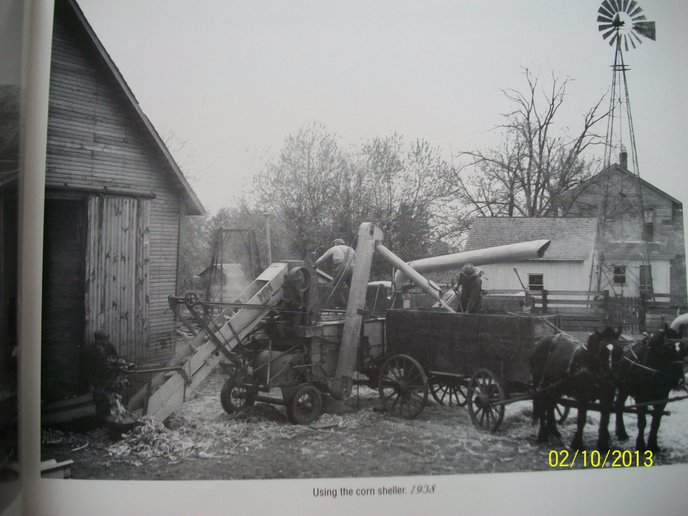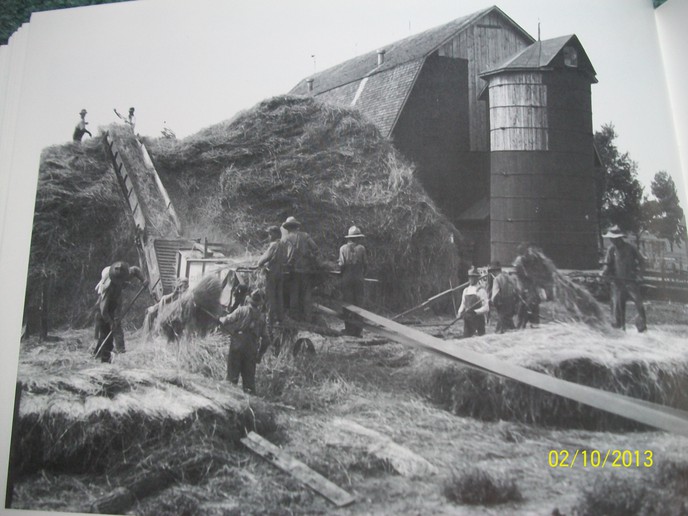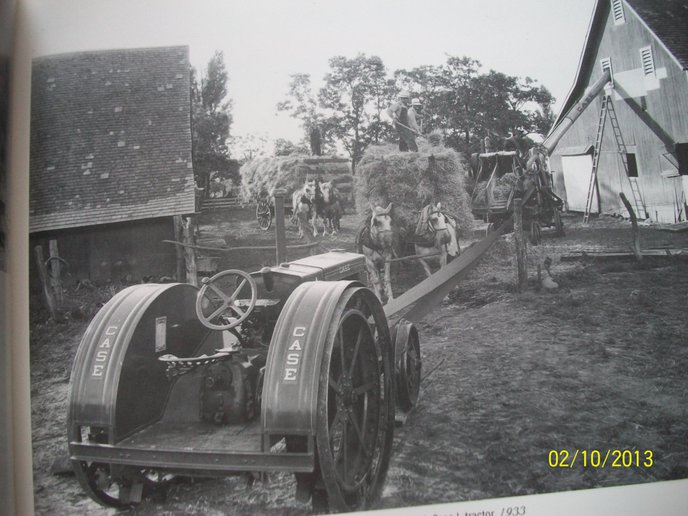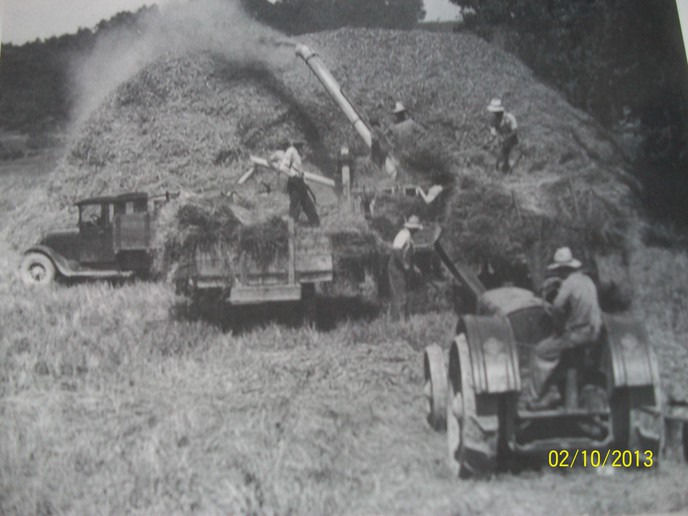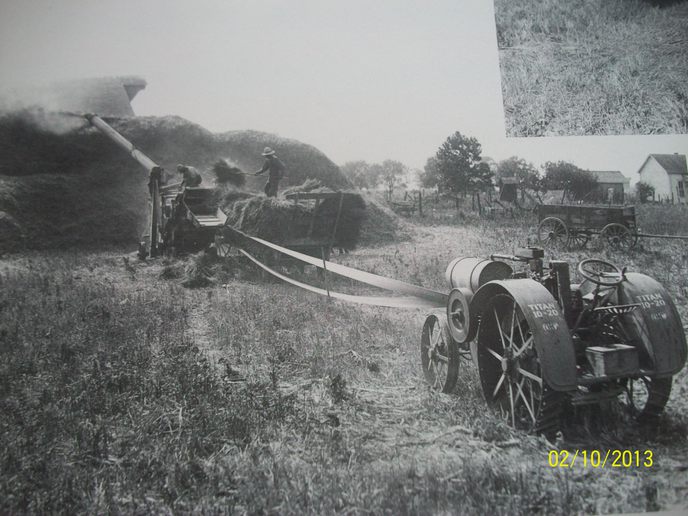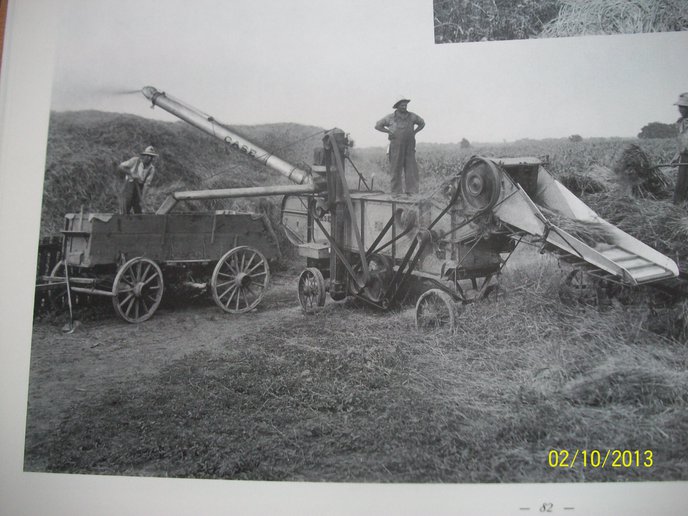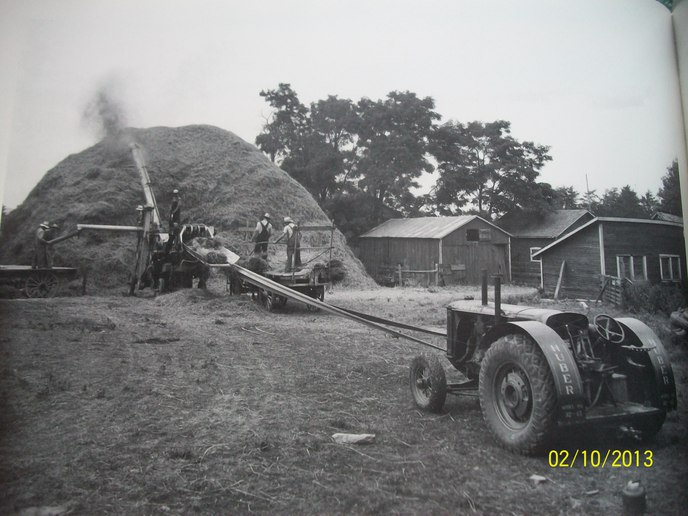You should upgrade or use an alternative browser.
- Thread starter John B.
- Start date
Ronald Anderson
Member
twostepn2001
Well-known Member
Like Mr. Anderson said, get the power unit further away from the dust and straw, but also to get the proper twist in the belt so it would wear evenly on both sides.
At least that's what a old timer told me once.
gtractorfan
Well-known Member
Mike Aylward
Well-known Member
Anonymous-0
Well-known Member
Wheat Farmer
Well-known Member
The hay fields were mostly small acreages owned by the rural folks in our area. Wouldn't really call them farmers; few row crops. They just ran a few cattle, and hay was whatever came up in the field. Even so, hay cutting/baling day was a big social event to late 50s country folk, so practically every day Dad and I got invited in to eat at the family table at noon. They really went all out with the fixings, too. Great memories.
(quoted from post at 06:46:08 06/03/13) A threshing machine would require a fair amount of power. The reason the longer belts were used was to help eliminate slippage of the belt when the higher power was required. A longer belt, due to it's own weight, will transmit more power than a shorter belt will. A shorter belt is more likely to slip. Mike
Bingo- belt just hung on to the pulleys better,less slipage.The sag in the belt absorbed shock load.When shock load passed the belt would slap against itself.
To this day, when I hear a popper running I think of that description.
LA in WI
gene bender
Well-known Member
We always drove the horses in towards the machine; they weren't as afraid of the rumble of the thresher as they were of the belt getting close to them. If the belt "slapped" together; it could scare the horses into running away.
John in Nebraska
Member
twostepn2001
Well-known Member
Gene, guess I should've said it better, but I meant the "inside out" twist so the belt ran on both sides for even wear.
Anonymous-0
Well-known Member
Fred from MO
Member
BarryfromIA
Well-known Member
Similar threads
- Replies
- 5
- Views
- 501
We sell tractor parts! We have the parts you need to repair your tractor - the right parts. Our low prices and years of research make us your best choice when you need parts. Shop Online Today.
Copyright © 1997-2024 Yesterday's Tractor Co.
All Rights Reserved. Reproduction of any part of this website, including design and content, without written permission is strictly prohibited. Trade Marks and Trade Names contained and used in this Website are those of others, and are used in this Website in a descriptive sense to refer to the products of others. Use of this Web site constitutes acceptance of our User Agreement and Privacy Policy TRADEMARK DISCLAIMER: Tradenames and Trademarks referred to within Yesterday's Tractor Co. products and within the Yesterday's Tractor Co. websites are the property of their respective trademark holders. None of these trademark holders are affiliated with Yesterday's Tractor Co., our products, or our website nor are we sponsored by them. John Deere and its logos are the registered trademarks of the John Deere Corporation. Agco, Agco Allis, White, Massey Ferguson and their logos are the registered trademarks of AGCO Corporation. Case, Case-IH, Farmall, International Harvester, New Holland and their logos are registered trademarks of CNH Global N.V.
Yesterday's Tractors - Antique Tractor Headquarters
Website Accessibility Policy


